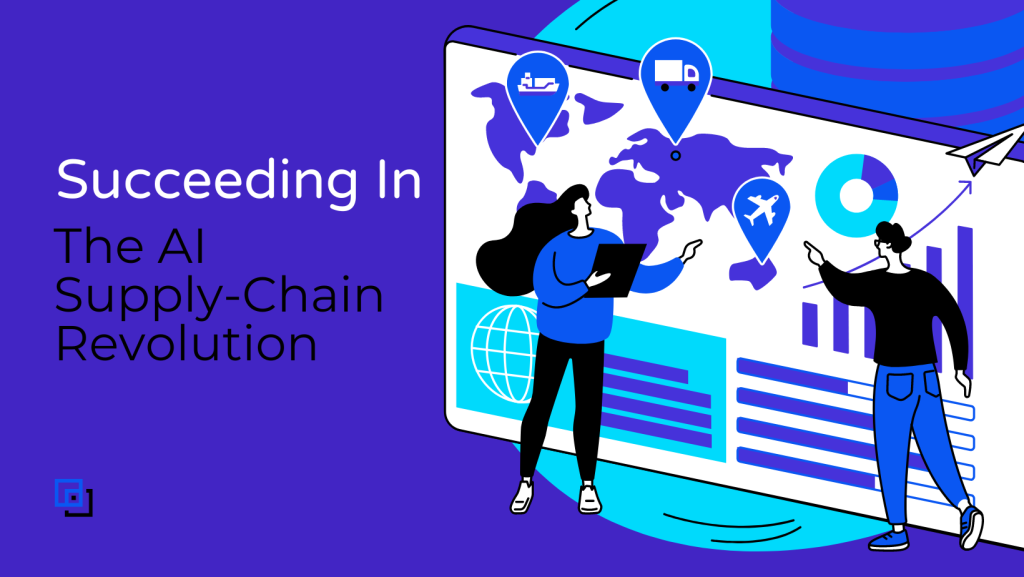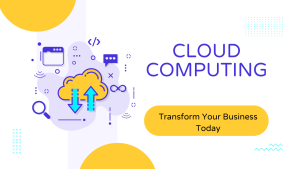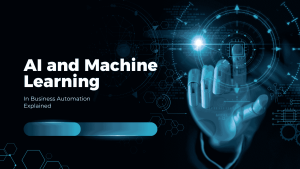Introduction
In recent years, supply chains face increasing complexity, driven by environmental sustainability demands, product diversity, and market volatility. Companies seek AI solutions to manage these challenges across functions like procurement and sales.
The optimal approach often involves a mix of solutions from various providers, making solution design and vendor selection critical. AI promises to revolutionize supply chains by analyzing data, improving decision-making, and enhancing operational visibility. Yet, successful implementation requires strategic planning, technology investment, and organizational readiness. Challenges such as data quality, ethics, and skill gaps must be addressed. Companies adopting AI can improve agility, risk management, and transparency. However, many projects face delays or budget overruns. The future of supply chains lies in sustainability and collaborative robotics.
Early adopters have benefited from AI’s insights, gaining a competitive edge and resilience. Properly managed AI transformations promise significant long-term benefits, but success hinges on careful planning and execution.
The Role of AI in Modern Supply Chains
Artificial intelligence (AI) plays a crucial role in enabling modern supply chains to become more agile, efficient, and resilient. The good news is that AI-based solutions are available and accessible to help companies achieve next-level performance in supply-chain management. The role of AI in modern supply chains cannot be underestimated, as its ability to analyze data and support decision making has the potential to revolutionize supply chain operations and drive success in the ever-changing business landscape. By leveraging AI, companies can enhance their capability in logistics and inventory management, predict and mitigate disruptions, and improve supply chain visibility and transparency. Additionally, the integration of AI’s ability to analyze huge volumes of data, understand relationships, provide visibility into operations, and support better decision making makes it a potential game changer for supply chain operations. This makes AI a crucial tool in succeeding in the AI supply-chain revolution. With the integration of AI’s ability to analyze huge volumes of data, understand relationships, provide visibility into operations, and support better decision making, companies can transform their supply chain operations and navigate disruptions, increase efficiency, and deliver better customer experiences. By utilizing AI’s ability to analyze data and support decision making, companies can also address the opportunities and constraints of all business functions, from procurement to sales, in an integrated end-to-end approach. This makes AI a crucial tool in succeeding in the AI supply-chain revolution and achieving success in the fast-paced world of supply chain management. Additionally, AI’s ability to analyze huge volumes of data, understand relationships, provide visibility into operations, and support better decision making can help companies stay ahead of the curve and adapt to the constantly changing business landscape.
Understanding AI’s capabilities in logistics and inventory management
AI offers numerous capabilities that can revolutionize logistics and inventory management in supply chains. Some key capabilities include:
- Demand forecasting: AI can analyze historical data and market trends to accurately predict demand, enabling companies to optimize inventory levels and reduce stockouts.
- Route optimization: AI algorithms can analyze various factors such as traffic, weather conditions, and customer preferences to optimize delivery routes and improve efficiency.
- Warehouse automation: AI-powered robots can automate repetitive tasks in warehouses, such as picking and packing, leading to faster and more accurate order fulfillment.
- Real-time inventory tracking: AI-enabled sensors and RFID technology can provide real-time visibility into inventory levels, allowing companies to optimize inventory management and reduce carrying costs.
By leveraging these AI capabilities, companies can streamline logistics operations, reduce costs, and improve overall supply chain performance.
Real-world examples of AI-driven supply chain solutions
Numerous real-world examples demonstrate the effectiveness of AI-driven supply chain solutions in optimizing operations and delivering value. Some notable examples include:
- Amazon: Amazon leverages AI algorithms to optimize its supply chain processes, including demand forecasting, inventory management, and logistics. This enables the company to deliver products faster, reduce costs, and enhance the customer experience.
- Walmart: Walmart utilizes AI-powered robots in its warehouses to automate tasks such as sorting, picking, and packing, improving efficiency and reducing errors.
- Maersk: Maersk, one of the largest shipping companies globally, uses AI and machine learning to optimize routes, improve container loading, and enhance overall supply chain visibility.
- UPS: UPS employs AI-driven route optimization algorithms to optimize delivery routes, reduce mileage, and improve fuel efficiency, resulting in cost savings and reduced carbon emissions.
These examples highlight the transformative potential of AI in supply chain management and demonstrate the tangible benefits that companies can achieve by leveraging AI-driven solutions.
How Techwink Transforms Supply Chain Operations
Techwink is a leading technology provider that offers innovative solutions to transform supply chain operations. Through its AI capabilities, Techwink enables companies to achieve greater efficiency, agility, and resilience in their supply chain processes. By leveraging Techwink’s AI-powered tools, companies can optimize logistics, inventory management, demand forecasting, and other critical aspects of supply chain operations. Techwink’s solutions are customizable to meet the specific needs of different supply chain companies, and the company provides comprehensive support and training to ensure successful implementation and utilization of its AI tools.
Overview of Techwink’s AI capabilities
Techwink offers a wide range of AI capabilities that empower supply chain companies to optimize their operations. Some key AI capabilities provided by Techwink include:
- Demand forecasting: Techwink’s AI algorithms analyze historical data, market trends, and external factors to accurately predict demand, enabling companies to optimize inventory levels and improve customer satisfaction.
- Route optimization: Techwink’s AI-powered tools optimize delivery routes based on factors such as traffic conditions, weather forecasts, and customer preferences, leading to improved efficiency and reduced costs.
- Inventory management: Techwink’s AI solutions provide real-time visibility into inventory levels, allowing companies to optimize their inventory management strategies and reduce carrying costs.
- Supply chain analytics: Techwink’s AI algorithms analyze supply chain data to identify trends, patterns, and potential bottlenecks, empowering companies to make data-driven decisions and improve overall supply chain performance.
By leveraging Techwink’s AI capabilities, supply chain companies can enhance their operational efficiency, reduce costs, and deliver better customer experiences.
Customization options for supply chain companies
Techwink understands that every supply chain company has unique requirements and challenges. Therefore, the company offers customization options for its AI solutions to meet the specific needs of different supply chain companies. Techwink works closely with its clients to understand their business processes, goals, and pain points. Based on this understanding, Techwink tailors its AI tools and solutions to address the specific challenges faced by each client. This customization ensures that Techwink’s AI solutions integrate seamlessly into the existing workflows and systems of supply chain companies. By providing customization options, Techwink enables companies to maximize the value they derive from AI in their supply chain operations and achieve better outcomes.
Benefits of Techwink’s AI tools in supply chain
Techwink’s AI tools offer numerous benefits to supply chain companies. Some key benefits include:
- Increased efficiency: By leveraging Techwink’s AI capabilities, companies can streamline their supply chain processes, automate repetitive tasks, and optimize resource allocation, leading to increased operational efficiency.
- Enhanced visibility: Techwink’s AI tools provide real-time visibility into supply chain operations, enabling companies to monitor and track inventory levels, logistics, and other critical aspects of their supply chain.
- Improved decision making: Techwink’s AI algorithms analyze vast amounts of data and provide valuable insights, empowering companies to make data-driven decisions and optimize their supply chain strategies.
- Agility and resilience: Techwink’s AI tools enable companies to respond quickly to disruptions, predict and mitigate risks, and build more agile and resilient supply chains.
- Cost savings: By optimizing logistics, inventory levels, and resource allocation, Techwink’s AI tools help companies reduce costs, improve profitability, and achieve better financial performance.
By harnessing the benefits of Techwink’s AI tools, supply chain companies can achieve significant improvements in their operations and gain a competitive edge in the market.
Building Resilience with AI-Enabled Supply Chains
Building resilience is crucial for supply chains to withstand disruptions and maintain operations. AI-enabled supply chains are better equipped to build resilience due to AI’s predictive and adaptive capabilities. AI can analyze large volumes of data, identify patterns, and predict potential disruptions. By leveraging AI, companies can proactively plan for and mitigate risks, adapt to changing conditions, and quickly recover from disruptions. AI also enhances supply chain visibility and transparency, enabling companies to identify vulnerabilities and take proactive measures. By building resilience with AI-enabled supply chains, companies can ensure business continuity, maintain customer satisfaction, and gain a competitive advantage in the market.
How AI predicts and mitigates disruptions
AI plays a critical role in predicting and mitigating disruptions in supply chains. By analyzing historical data, market trends, and external factors, AI algorithms can identify patterns and predict potential disruptions in a timely manner. This allows companies to take proactive measures to mitigate risks and minimize the impact of disruptions. For example, AI can help companies anticipate demand fluctuations, optimize inventory levels, adjust production schedules, and secure alternative supply sources. AI also enables companies to monitor real-time data from various sources, such as weather forecasts, transportation routes, and market conditions, allowing them to proactively respond to potential disruptions. By harnessing the predictive power of AI, companies can improve their supply chain resilience and minimize the negative impact of disruptions.
Enhancing supply chain visibility and transparency
AI enables companies to enhance supply chain visibility and transparency, which are crucial for effective supply chain management. AI-powered tools collect and analyze data from various sources, such as sensors, RFID tags, and enterprise systems, providing real-time visibility into supply chain operations. This enables companies to track inventory levels, monitor logistics, and identify bottlenecks or inefficiencies in the supply chain. AI also improves transparency by providing stakeholders with access to accurate and up-to-date information regarding product origins, manufacturing processes, and environmental impact. Enhanced supply chain visibility and transparency enable companies to identify vulnerabilities, optimize processes, and build trust with customers and partners. By leveraging AI, companies can create more transparent and efficient supply chains that deliver better value to all stakeholders.
Implementing AI Solutions: A Step-by-Step Guide
Implementing AI solutions in supply chains requires a systematic approach. Here is a step-by-step guide to help companies successfully implement AI in their supply chain operations:
- Identify your supply chain’s AI readiness: Assess your organization’s readiness for AI adoption by identifying potential barriers, evaluating existing data infrastructure, and assessing the skills and capabilities of your workforce.
- Selecting the right AI tools for your needs: Identify the specific AI tools that align with your supply chain goals and challenges. Consider factors such as scalability, ease of integration, and compatibility with existing systems.
- Plan for change management: Implementing AI requires organizational changes. Develop a change management plan that includes training programs, communication strategies, and incentives to ensure successful adoption of AI tools.
- Pilot implementation: Start with a small-scale pilot implementation to test the effectiveness of AI tools and identify any potential issues. Use the pilot phase to gather feedback, make adjustments, and refine the implementation strategy.
- Scale up and monitor: Once the pilot phase is successful, scale up the implementation of AI solutions across the supply chain. Continuously monitor the performance and impact of AI tools, and make necessary adjustments to optimize their effectiveness.
By following this step-by-step guide, companies can effectively implement AI solutions in their supply chains and unlock the full potential of AI in driving operational efficiency and performance.
Identifying your supply chain’s AI readiness
Before implementing AI solutions in your supply chain, it is essential to assess your organization’s readiness for AI adoption. Here are some key considerations for identifying your supply chain’s AI readiness:
- Evaluate existing data infrastructure: Assess the quality, accessibility, and integration capabilities of your data infrastructure. AI relies on vast amounts of high-quality data, so it is crucial to ensure that your systems can support AI-driven analytics and decision-making.
- Assess skills and capabilities: Evaluate the skills and capabilities of your workforce in terms of data analytics, AI technologies, and change management. Identify any skill gaps and develop training programs to empower employees to leverage AI tools effectively.
- Identify potential barriers: Consider any potential barriers to AI adoption, such as resistance to change, lack of understanding, or concerns about data privacy and security. Addressing these barriers early on can help ensure smooth implementation.
By identifying your supply chain’s AI readiness, you can develop a tailored implementation strategy and address any gaps or challenges before embarking on the AI journey.
Selecting the right AI tools for your needs
Selecting the right AI tools for your supply chain requires a thorough understanding of your specific needs and challenges. Here are some key factors to consider when selecting AI tools:
- Scalability: Ensure that the AI tools can scale to handle the volume and complexity of your supply chain operations. Consider factors such as data processing capabilities, computational power, and scalability of the AI algorithms.
- Integration: Assess the ease of integration of the AI tools with your existing systems and processes. Compatibility with your ERP, WMS, and other systems is crucial for seamless integration and data flow.
- Customization options: Look for AI tools that offer customization options to meet your specific supply chain requirements. A one-size-fits-all solution may not address your unique challenges effectively.
- Industry expertise: Consider AI tools developed specifically for the supply chain industry. These tools are often designed to address industry-specific challenges and have a deeper understanding of supply chain dynamics.
By carefully evaluating these factors and selecting the right AI tools for your needs, you can maximize the value and effectiveness of AI in your supply chain operations.
Overcoming the Challenges of AI Adoption
Implementing AI in supply chain operations poses several challenges that companies need to overcome. Here are some common challenges and strategies for overcoming them:
- Navigating data quality and integration issues: Ensure that your data is accurate, accessible, and compatible with AI algorithms. Invest in data cleansing and integration processes to overcome data quality and integration challenges.
- Addressing concerns around AI ethics and job displacement: Foster open communication and transparency about the ethical implications of AI. Provide training and upskilling opportunities to ensure employees are prepared for new roles and responsibilities.
- Managing organizational changes: Implement change management strategies to address resistance to change and foster a culture of continuous learning and adaptation.
- Redesigning processes: Redesign supply chain processes to leverage AI’s capabilities effectively. Identify areas where AI can add the most value and adapt processes accordingly.
By proactively addressing these challenges, companies can successfully adopt AI in their supply chains and drive significant improvements in efficiency, agility, and performance.
Navigating data quality and integration issues
One of the key challenges in implementing AI in supply chains is navigating data quality and integration issues. Here are some strategies to overcome these challenges:
- Data cleansing: Invest in data cleansing processes to ensure that your data is accurate, complete, and consistent. This involves identifying and correcting errors, removing duplicates, and standardizing data formats.
- Data integration: Implement data integration strategies to ensure that data flows seamlessly between different systems and platforms. This may involve developing APIs, using data integration tools, or leveraging cloud-based solutions for data integration.
- Data governance: Establish data governance practices and policies to ensure data quality, privacy, and security. This includes defining data ownership, access controls, and data management processes.
- Data infrastructure: Evaluate your data infrastructure to ensure that it can support the volume and complexity of data required for AI-driven analytics. This may involve upgrading hardware, investing in cloud-based solutions, or partnering with data management providers.
By addressing data quality and integration issues, companies can ensure that their AI initiatives are built on a solid foundation of reliable and accurate data.
Addressing concerns around AI ethics and job displacement
As AI becomes increasingly prevalent in supply chain operations, concerns around AI ethics and job displacement arise. Companies can address these concerns by implementing the following strategies:
- Ethical guidelines: Develop and communicate clear ethical guidelines for AI use in supply chain operations. Ensure transparency and accountability in AI decision-making processes and consider the potential social and environmental impact of AI-driven initiatives.
- Upskilling and reskilling: Invest in upskilling and reskilling programs to prepare employees for the changing nature of work. Provide training opportunities to help employees acquire new skills that are in demand in the AI-driven supply chain.
- Redefining roles: Redefine job roles to focus on tasks that require human judgment, creativity, and emotional intelligence. AI can take over repetitive and mundane tasks, allowing employees to focus on more complex and strategic activities.
- Organizational culture and communication: Foster a culture of collaboration and open communication to address employee concerns and ensure that they feel engaged in the AI adoption process. Encourage employees to provide feedback and suggestions for improvement.
By proactively addressing AI ethics and job displacement concerns, companies can ensure a smooth transition to AI-enabled supply chain operations and create a positive impact on employees and society.
The Future of Supply Chains: Trends and Predictions
The future of supply chains will be shaped by several trends and predictions. Here are some key trends to watch:
- Increasing importance of sustainability: Sustainability will become a top priority for supply chains, with a focus on reducing environmental impact, promoting ethical sourcing, and adopting circular economy principles.
- Collaborative robots: Collaborative robots, also known as cobots, will play an increasing role in supply chain operations. These robots can work alongside humans, improving efficiency and reducing the risk of injuries.
- AI-driven models for sustainability: AI will enable supply chains to optimize sustainability efforts by analyzing data, identifying areas for improvement, and making real-time adjustments.
- Supply chain visibility and transparency: The demand for supply chain visibility and transparency will continue to grow, driven by consumer expectations, regulatory requirements, and the need to mitigate risks.
By embracing these trends and leveraging AI and other advanced technologies, supply chains can become more efficient, sustainable, and resilient.
The increasing importance of sustainability in AI-driven models
As AI becomes more prevalent in supply chain operations, the importance of sustainability is also increasing. AI-driven models can play a crucial role in optimizing sustainability efforts and reducing the environmental impact of supply chains. By analyzing vast amounts of data, AI algorithms can identify opportunities for reducing waste, optimizing transportation routes, and promoting ethical sourcing practices. AI can also enable real-time monitoring of energy consumption, carbon emissions, and other environmental metrics, allowing companies to make data-driven decisions to improve sustainability performance. By integrating sustainability considerations into AI-driven models, supply chains can become more environmentally friendly and contribute to a more sustainable future.
Collaborative robots and their impact on supply chain efficiency
Collaborative robots, also known as cobots, are revolutionizing supply chain operations and driving efficiency improvements. These robots can work alongside humans, assisting in tasks such as picking, packing, sorting, and transportation. The impact of collaborative robots on supply chain efficiency is significant. Some key benefits include:
- Increased productivity: Collaborative robots can work alongside humans, completing tasks faster and more accurately. This improves overall productivity and throughput.
- Reduced labor costs: By automating repetitive and physically demanding tasks, collaborative robots reduce the need for human labor, resulting in cost savings.
- Improved safety: Collaborative robots are designed to work safely alongside humans, reducing the risk of injuries and improving workplace safety.
- Flexibility and adaptability: Collaborative robots can be easily programmed and reprogrammed to perform different tasks, enabling supply chains to quickly adapt to changing demands.
By leveraging collaborative robots, supply chains can enhance efficiency, reduce costs, and improve the overall working environment.
Column Name A | Column Name B |
Increased productivity | Collaborative robots can work alongside humans, completing tasks faster and more accurately. This improves overall productivity and throughput. |
Reduced labor costs | By automating repetitive and physically demanding tasks, collaborative robots reduce the need for human labor, resulting in cost savings. |
Improved safety | Collaborative robots are designed to work safely alongside humans, reducing the risk of injuries and improving workplace safety. |
Flexibility and adaptability | Collaborative robots can be easily programmed and reprogrammed to perform different tasks, enabling supply chains to quickly adapt to changing demands. |
Conclusion
In conclusion, the integration of AI in supply chain management is reshaping traditional practices and enhancing efficiency. By leveraging AI capabilities, companies can predict disruptions, improve visibility, and customize solutions to meet specific needs. Despite challenges like data quality and ethical concerns, the benefits of AI tools in supply chain operations are significant. Embracing AI-driven models not only streamlines processes but also paves the way for sustainable and collaborative approaches in the future of supply chains. Stay ahead of the curve by exploring AI adoption tailored to your supply chain’s readiness and requirements, ensuring resilience and agility in the face of evolving market dynamics.
Contents
Frequently Asked Questions
Most frequent questions and answers
The first step to integrate AI into your supply chain is to align AI adoption with your company’s business strategy. Assess your supply chain’s readiness for AI, identify value creation opportunities, and develop a strategic roadmap for AI implementation. Consider industry-specific requirements, especially in process industries.
Implementing AI in schools has risks like privacy and data security. Using AI can raise privacy concerns as student data is collected and stored. It’s crucial to ensure AI algorithms are unbiased and fair. Protecting student data is vital, and AI systems must be transparent and accountable. Integrating AI into education may pose challenges and should complement human teachers instead of replacing them.
The long-term impacts of AI on global supply chains include improved agility, better decision-making, and increased efficiency. AI can help companies navigate market volatility, optimize supply chain processes, and capture the full value of their operations. It can also drive innovation and create new business opportunities.



